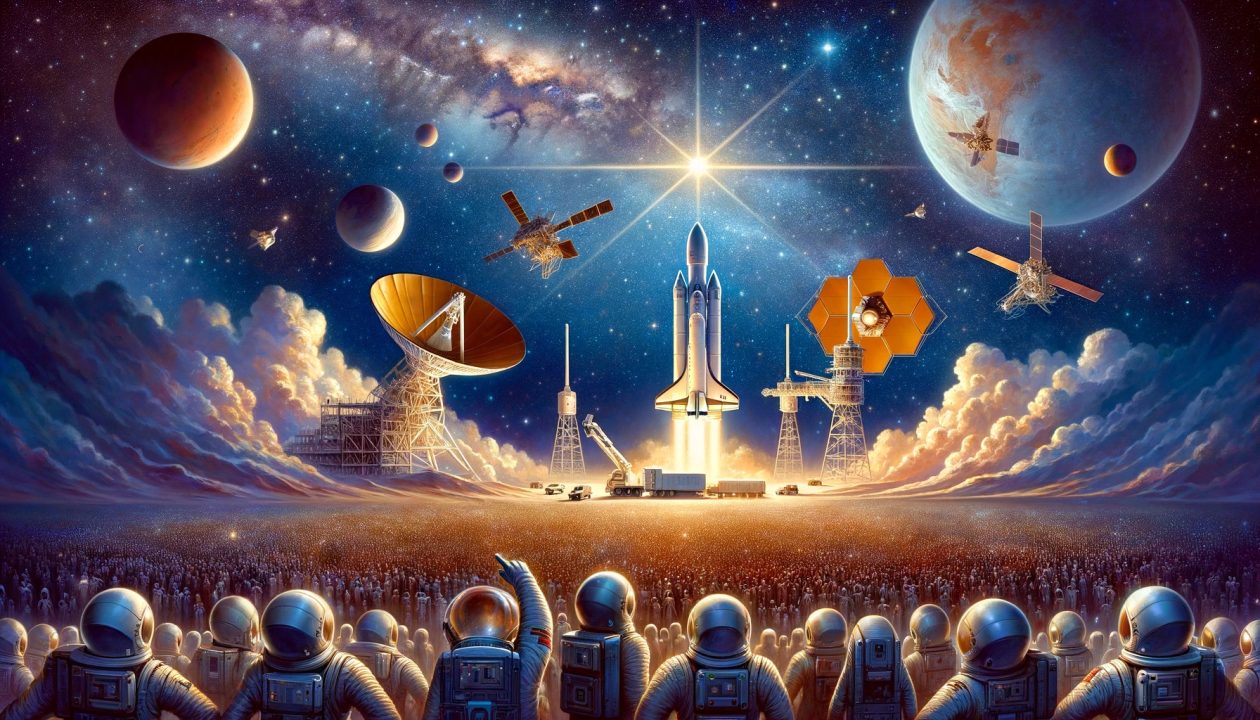The Growing Satellite Presence in Earth’s Orbit: What 2024 Data Reveals
In 2024, Earth’s orbital landscape has never been more active. With approximately 9,900 operational satellites circling the planet, space is getting increasingly crowded. The significant rise in satellite deployments is driven by advancements in technology, the proliferation of small satellites, and the relentless demand for improved communication networks and Earth observation systems.
Why So Many Satellites?
A large portion of these satellites reside in low Earth orbit (LEO), an area now swarming with technology that enables faster communication and real-time observation of the planet. Much of this increase stems from the widespread use of smaller satellites, often referred to as CubeSats. These small devices are not only cheaper to manufacture but can also be launched in clusters, allowing several to enter orbit in a single mission. This trend has drastically reduced the cost of space access and, in turn, the barriers to entry for companies and countries looking to build their space capabilities.
Dominant Players in the Satellite Race
Countries like the United States, China, and the United Kingdom lead the charge when it comes to satellite launches. In particular, the United States remains at the forefront of satellite operations, contributing to a significant portion of the global satellite fleet. These satellites perform various tasks, including communication, Earth observation, scientific research, and military operations.
According to the United Nations Office for Outer Space Affairs (UNOOSA), the number of satellites has increased steadily over the last few years, and 2024 is no exception. The increase has been fueled by innovations in space technology, alongside the global push for better internet coverage and more robust data collection capabilities.
The Problem of Space Traffic and Debris
The growing number of satellites also brings new challenges, particularly in terms of space traffic management and debris mitigation. With thousands of satellites now sharing low Earth orbit with even more inactive objects and space junk, the risk of collisions is higher than ever. The European Space Agency (ESA) reports a rise in the number of maneuvers needed to avoid collisions, underscoring the urgent need for better space traffic management.
Efforts to mitigate debris have also picked up, with several international bodies calling for stricter guidelines on satellite decommissioning and removal. Space agencies like ESA and private companies are working on solutions to track and remove debris from space, ensuring that the increasing satellite population doesn’t create an unsustainable orbital environment.
The Future of Space Exploration
Looking ahead, the satellite industry shows no signs of slowing down. The global space exploration sector is expected to reach $31 billion within the next decade, according to industry experts. This growth will likely bring new innovations in satellite technology, further expanding the range of applications satellites can serve. From advancing communication networks to monitoring climate change, satellites will continue to play a crucial role in shaping the future of space exploration.
Conclusion
The year 2024 marks a pivotal time for the space industry. With nearly 10,000 satellites currently orbiting Earth and many more to come, the need for careful management of space resources has never been more pressing. As satellite deployments surge, international collaboration, technological innovation, and a focus on sustainability will be key to ensuring the safe and efficient use of Earth’s orbital space.


